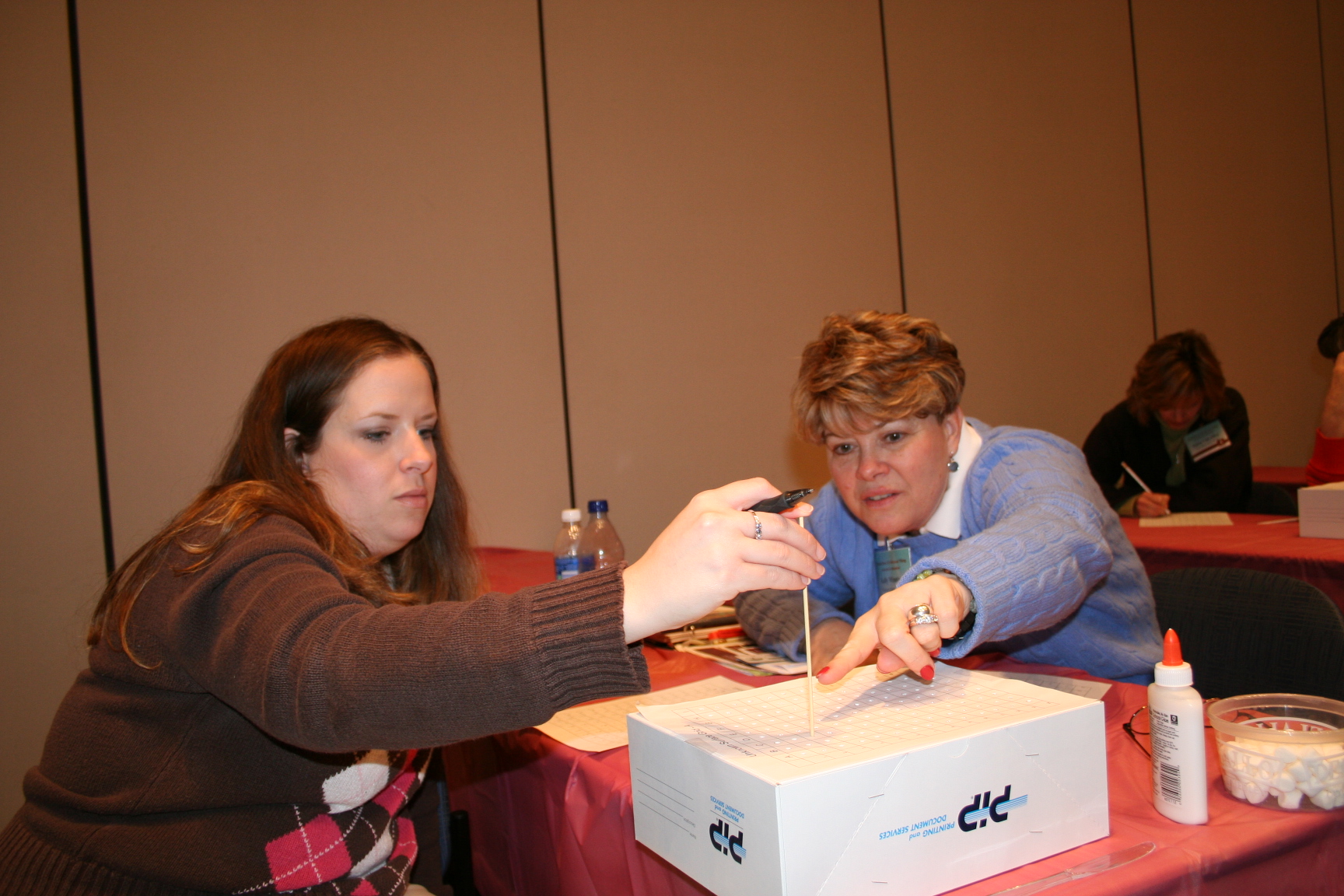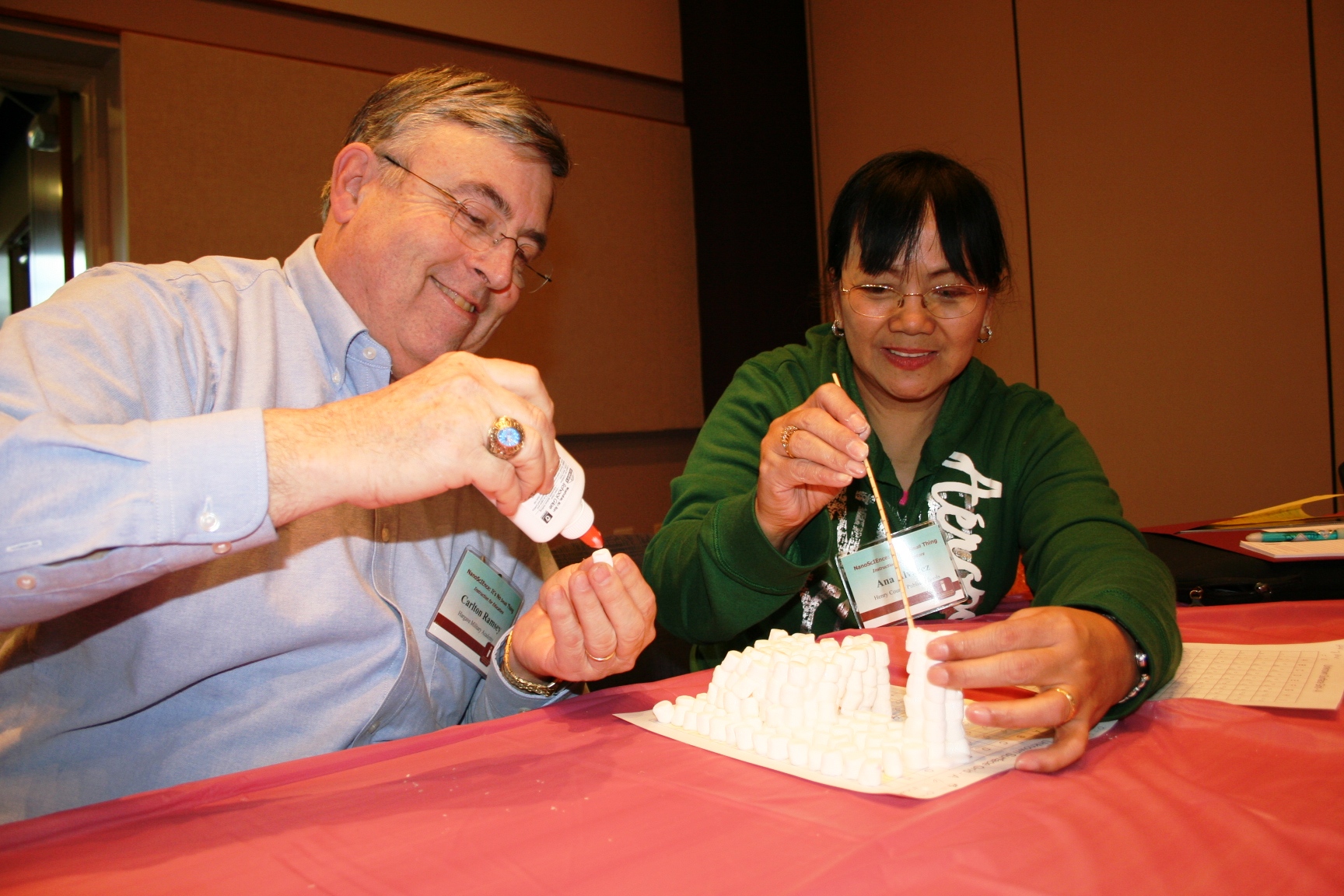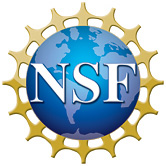How Can We "See" What We Can Not See?
Nanoscientists and engineers use special tools called scanning probe microscopes to "see" the nanoscale features on a material's surface by feeling around with a sharp probe tip. In this activity, students analyze the a mystery landscape by probing.
Materials
- Shoe boxes containing mystery landscapes
- Probes (kabob skewers or chopsticks work well), marked out with 1 cm increments
- Rulers (if students need to mark out increments on probes)
- Draft activity guide with background information on probe microscopy
- Instructions for data analysis
- Data sheet for mapping unknown
- Data sheet for transforming collected data
- Data sheet for building 3D model
- Materials for building 3D models (e.g. sugar cubes, marshmallows, Legos)
Alignment with the Wisconsin Model Science Standards
For further discussion of this activity, please see the following publication:
Y. S. Kau, A. Cina, and J. A. Gimm, "Inside the Black Box," The Science Teacher, 46-49 (December 2006).
This activity has been used in a wide variety of settings, ranging from middle- and high-school classroom to professional development workshops for K12 educators. Below are some photos from a recent professional development workshop for K12 teachers held at the Institute for Advanced Learning and Research.

|

|
|
|
|
|



